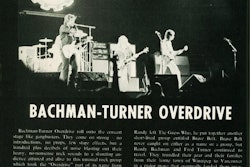Up in the air
EOBR rule and other regulations’ immediate futures remain unclear
When the U.S. Court of Appeals for the Seventh Circuit vacated the Federal Motor Carrier Safety Administration’s final rule approving use of electronic onboard recorders for carriers that are the worst violators of the hours-of-service regulation, it was well-received by many truckers.
Randy Grider is editor of Truckers News. He is the son of a career trucker and holds a CDL. Write him at [email protected].Though a minority of drivers favors EOBRs because they feel the paperless log function is more efficient, most truckers share the notion that recorders are an invasion of privacy and could be used by fleets to force drivers, who may feel the need to rest, to continue driving if they haven’t used all of their legal allotted driving time.
Apparently, the federal appeals court agrees on the latter argument. The court found the final rule to be “arbitrary and capricious” because FMCSA did not contain provisions that ensure the tracking devices would not be used to harass drivers. The ruling was the result of a challenge from the Owner-Operator Independent Drivers Association. In sending the rule back to FMSCA, it would seem to be a de facto blow against FMCSA’s broader rulemaking announced earlier this year that would require EOBRs on all commercial trucks. FMCSA says it is reviewing the court’s decision. The agency could appeal the three-judge panel’s ruling with hopes of still making the implementation date. Then again, FMCSA could use it to buy more time to work out EOBR technical details. A 19-member subcommittee continues to wrangle with issues such as device certification, data security and how to transfer hours-of-service logs from truckers’ EOBRs to enforcement officers.
EOBRs are not the only trucking-related regulations with murky immediate futures. The unpopular rewrite of the hours-of-service rule recently populated a list of the most expensive rule proposals being considered by the Obama administration. In a letter from President Obama to House Speaker John Boehner, the president put the economic burden of the hours rule at $1 billion. The other trucking-related rule was EOBRs, with a price tag of $2 billion.
The American Trucking Associations, which supports an EOBR mandate, has kept up the pressure on the Obama administration to keep the current hours-of-service rule in place.
Another unpopular trucking measure being challenged is the revamped cross-border trucking program between Mexico and the United States. The Obama administration inked a deal this summer to allow certified Mexican carriers to operate in the United States if Mexico rescinded more than $2 billion in tariffs placed on U.S. exports when Congress shut down a similar program initiated by former President Bush. Already controversial, the program took another public relations hit when it was announced that American taxpayers would fund onboard recorders for authorized Mexican carriers in the program.
The first Mexican trucks were scheduled to roll in September, but that has been pushed back to this month. Another potential roadblock is a recent lawsuit filed by the Teamsters and Public Citizen to keep the border closed to Mexican trucks beyond a 25-mile commercial zone.
While the current shadows of uncertainty cast on EOBRs, hours-of-service regulations and the cross-border trucking program probably don’t signify the end of the road for any of these measures, the ongoing challenges could definitely promise more twists and turns ahead.
STEEL REMINDERS
It may have been the smallest load Marten Transport driver Alan McCoury has ever hauled — two 6-foot steel beams weighing approximately 200 pounds each — but it also was the most symbolic. In early September, McCoury and Marten representatives stopped by the Truckers News office en route to Mississippi from New York City with the beams, which could have been mistaken for scrap metal without the accompaniment of a special detailed trailer and without knowing the tragic history. The beams were window supports for the collapsed World Trade Center — one from each tower. They were being transported to the University of Southern Mississippi for use in a memorial. Small pieces of steel, yes, but gazing at them it’s easy to see them as giant reminders of a single historical event that changed us all.










